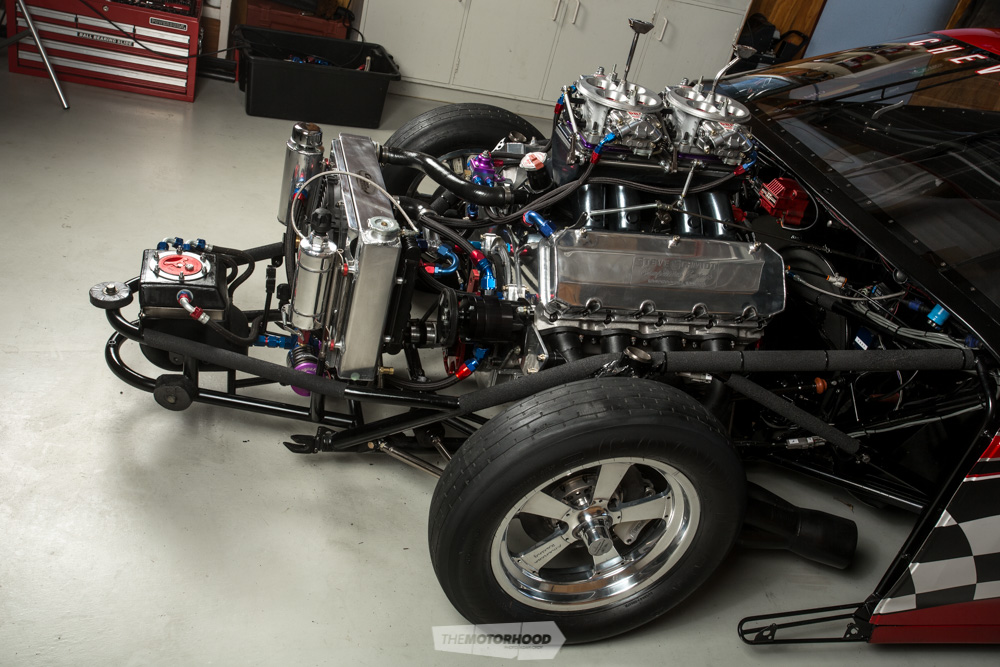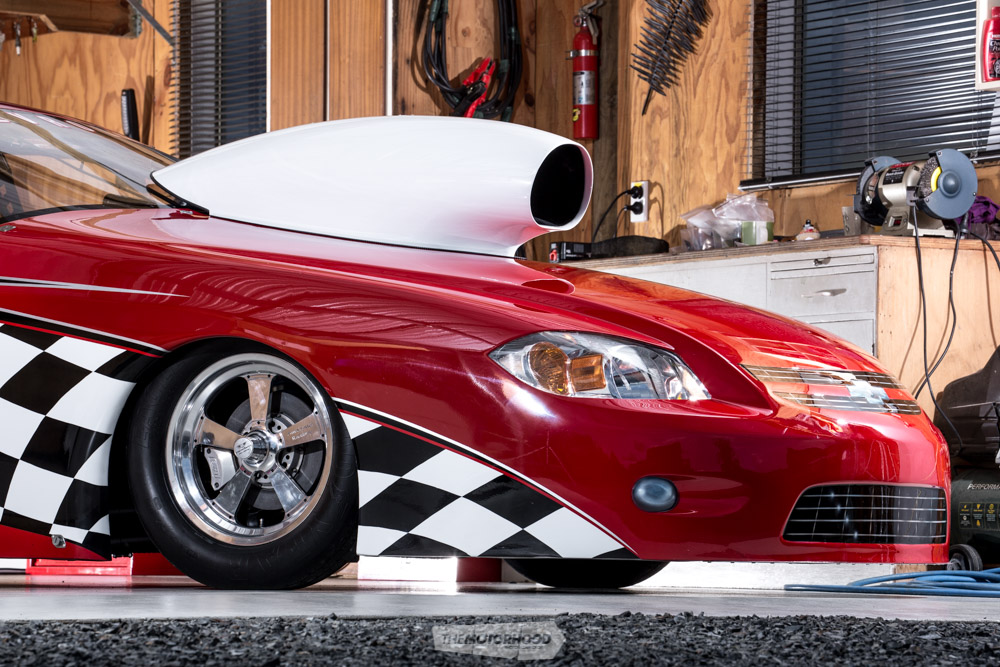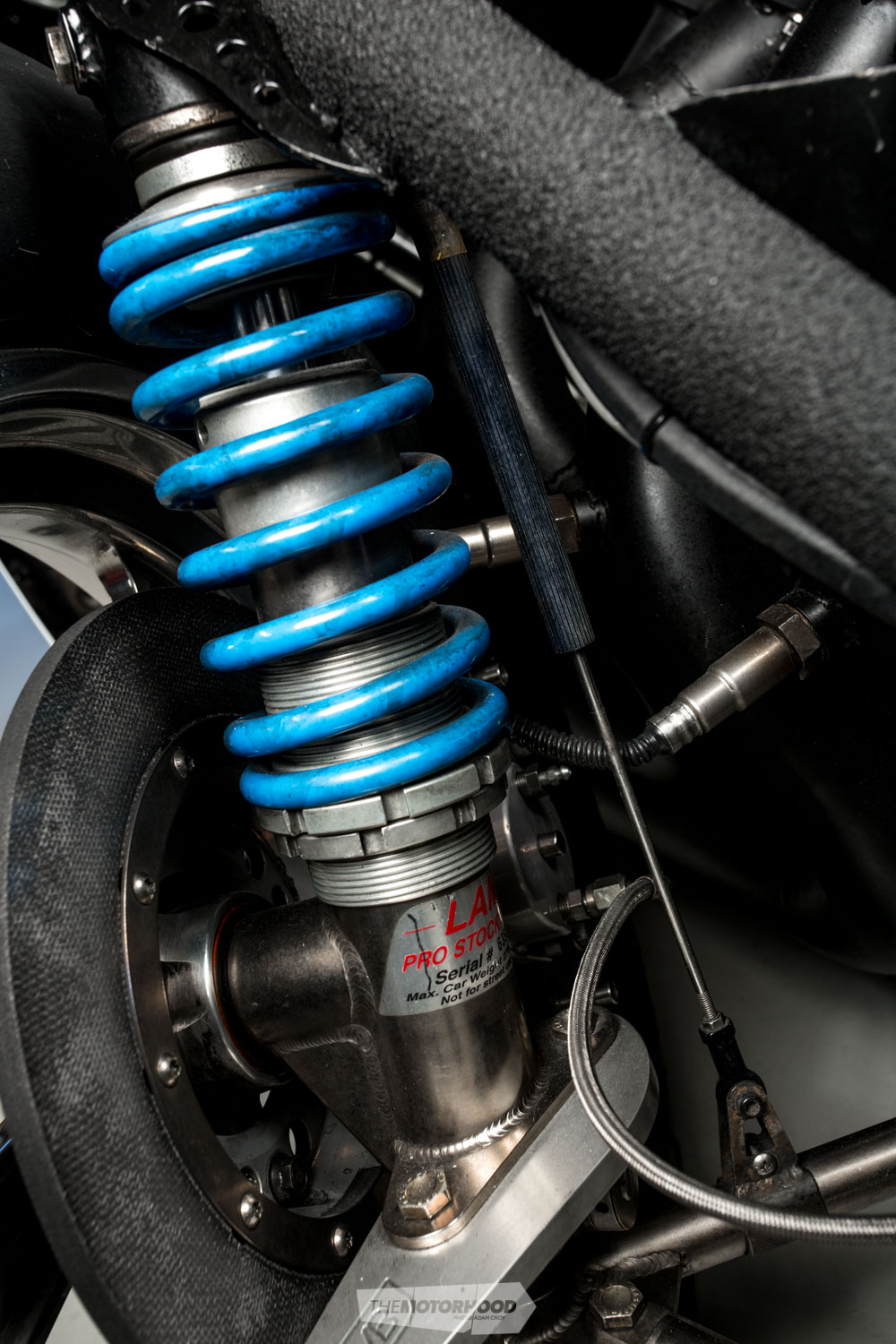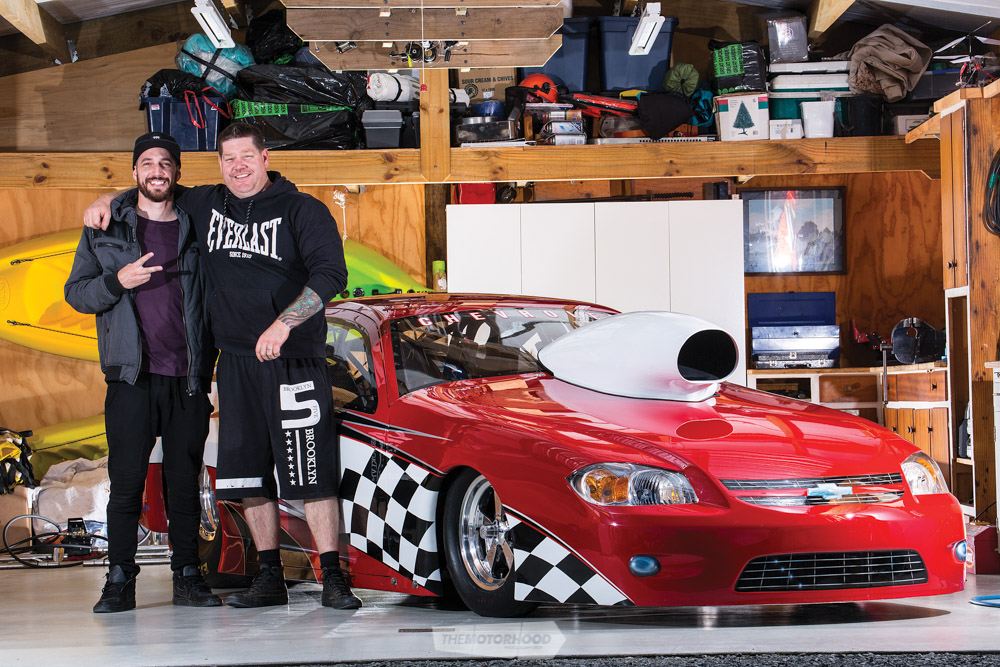In the world of New Zealand drag racing, the Mahon brothers — Heath and Jarrod — are known for their success behind the wheel of their 2000 Chev Camaro raced in the IHRA Super Sedan class. An all-steel body powered by a naturally-aspirated single-carb 618ci big block built by Steve Schmidt Racing Engines, the boys pushed it to an impressive PB of 7.85s at 181.54mph.

They recently sold the Camaro to step up a notch, but details on exactly what they’d upgraded to were thin on the ground, to say the least. Well, that is until now. We were lucky enough to get an exclusive feature on the Mahons’ new Pro Stock drag car in the latest issue of NZV8, and the boys had it out on track at the recent Meremere Dragway Test & Tune.

For the full specs and story on this impressive piece of machinery, you’re going to have to grab a copy of the magazine, but we’ve got a few teasers here to show you just what makes this thing so special.

Built to compete in NHRA Pro Stock over in the USA, you’re looking at the cutting edge of drag racing technology. It’s like a supercomputer powered by the final evolution of old-school brute force, with a 600-plus-cubic inch big block built by Steve Schmidt Race Engines, with over 15:1 compression and good for over 1000hp.

The chassis is a full chromoly tube frame stitched together by Don Ness Racecraft, and is reputed to be one of the last ever vehicles built by Don Ness before he died.

Above this is a full carbon-fibre body, based on a 2007 Chev Cobalt. While NHRA Pro Stock rules dictate the retention of functioning stock headlights and tail-lights, in the stock positions, this is far from your run-of-the mill nana-mobile — if it isn’t carbon-fibre, it’s aluminium, and if it isn’t aluminium, it’s polycarbonate windows, all in the pursuit of extreme weight saving.

But it isn’t just big cubes and light weight. The onboard technology works smarter, rather than harder, with features such as individual shock travel sensors at each corner.

The data these record over a pass is stored via the Racepak V300 data logger, and analyzed after each run, allowing suspension characteristics to be fine-tuned to an incredible degree of accuracy.
The Koni electronic shock controller works in conjunction with an onboard pneumatic system, allowing the Koni adjustable air sweeps to be programmed to behave a certain way at any given point. For example, if Heath wishes to firm up the rear shock compression for one second after shifting into second gear, this can be programmed.
Similarly, the individual oxygen sensors plumbed into each header primary allows Jarrod to examine the tune and the engine’s behaviour over an entire run. And, while this aspect of the job remains a lot more hands-on in terms of adjusting the two 1250cfm Pro Systems Dominator carbs, the guesswork required is kept to a minimum.

[2588]
How will the team perform over the upcoming season? That is anyone’s guess, as it can’t be easy getting to grips with weaponry this serious, but if history has shown us anything to learn from, it’s that the Mahon brothers are going to get the hang of things pretty damn quick.








